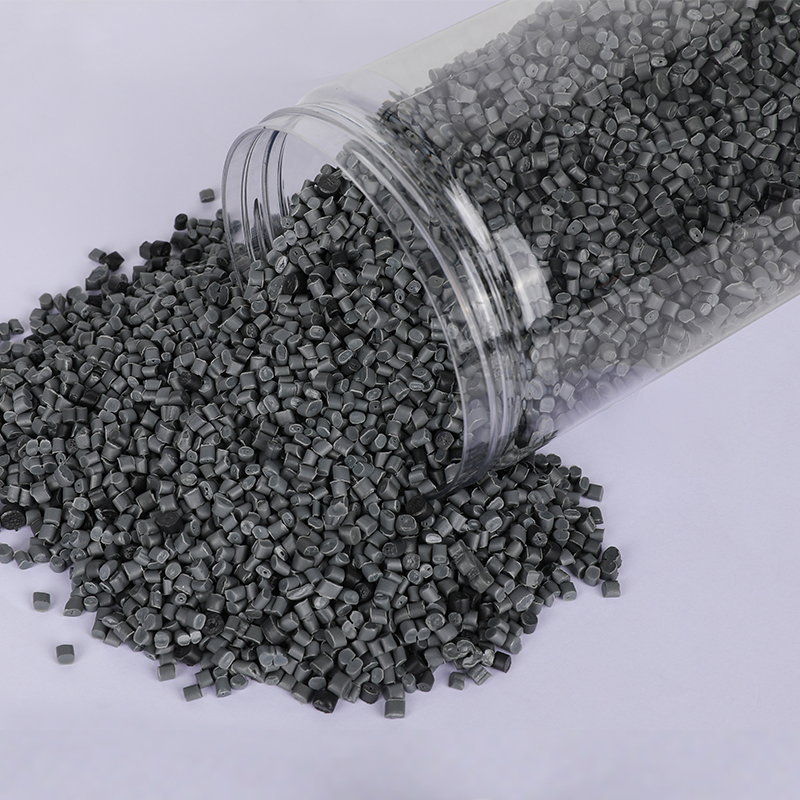Stay up to date with our recent products
Web Menu
Product Search
Exit Menu
Understanding Additives in Recycled Polyethylene: Impact on Performance
The recycling process itself often results in a material that requires enhancement, as the physical properties of RPE may not always match those of virgin polyethylene. To ensure the final product meets industry standards for strength, flexibility, and durability, manufacturers typically incorporate a range of additives during the production process.
The first key category of additives used in RPE are stabilizers, which are necessary to protect the material from degradation during processing. Since polyethylene is a thermoplastic, it’s sensitive to heat, and during the recycling process, it can break down more quickly than virgin resin, especially when exposed to high temperatures for extended periods. Stabilizers help maintain the polymer's molecular structure, ensuring that the final product retains its desired mechanical properties, such as tensile strength and impact resistance. Without these stabilizers, RPE could suffer from brittleness or reduced longevity, making it less suitable for high-performance applications.

Plasticizers are another common additive used to modify the flexibility of RPE. When polyethylene is recycled, its molecular chains tend to become stiffer, which can affect its workability. By adding plasticizers, manufacturers can restore or enhance the flexibility of the material, making it more versatile for use in a variety of products, from flexible films to molded containers. However, it’s essential to find the right balance—too much plasticizer can compromise the material’s strength, while too little can leave it too rigid for some applications.
In addition to stabilizers and plasticizers, antioxidants are often introduced into the recycling process to prevent oxidative degradation. Polyethylene, especially when subjected to the heat of recycling, can undergo oxidation, which can lead to discoloration and weakened properties over time. Antioxidants protect the polymer from these changes, ensuring that the RPE maintains its appearance and mechanical strength, even when exposed to harsh environmental conditions.
Another important group of additives is the processing aids, which enhance the ease of manufacturing and molding the recycled material. These aids improve the flow characteristics of the polymer during extrusion or injection molding, making it easier to shape and form into the desired product. Without the right processing aids, RPE can become difficult to process, leading to inefficiencies in production and potentially affecting the quality of the final product.
While these additives are crucial for enhancing the properties of recycled polyethylene, manufacturers must carefully consider their impact on the overall environmental benefits of using recycled materials. Additives should not outweigh the eco-friendly advantages of recycling, so the materials used need to be both effective and sustainable. In this regard, selecting additives that are compatible with the recycling process—and that won’t degrade the material’s recyclability in future cycles—is essential for maintaining the long-term sustainability of RPE.
By carefully selecting and balancing these additives, manufacturers can ensure that RPE meets the specific requirements of their applications, whether that’s for durable, high-strength containers or more flexible, lightweight products.
As China PCR Recycled Plastic Granules Factory, We always adhere to the experience and philosophy of "keeping up with the times, constantly innovating, developing efficiently, and cooperating for mutual benefit"

Address: No.11, Wangzhuang Section, Provincial Road 01, Daqiao New Area, Economic Development Zone, Haiyan County, Jiaxing City, Zhejiang Province, China
Phone: +86-18058285678
Fax: +86-0573-86868101
E-mail: [email protected]
SUNRISE GROUP(Overseas Exclusive Agent)
www.sunrisechemical.com
2024 ICIS Global Chemical Distributor Top 8
Export Sales Manager:Helen Zhang
Mob/Whatsapp: +86 19883063465
Email: [email protected]
Copyright © Jiaxing Anyiju Plastic Industry Co., Ltd. All Rights Reserved

 简体中文
简体中文 English
English







